Victorian councillors are elected to represent Victorian communities - they have significant legislative and governance responsibilities
Victorian councillors are elected to represent Victorian communities - they have significant legislative and governance responsibilities
The Victorian Local Governance Association is broadly supportive of the Local Government Bill (2018) which was tabled last week in the Victorian Parliament by the Hon Marlene Kairouz, Minister for Local Government. However, we continue to hold concerns regarding the Bill and make the following three recommendations.
Importantly, Recommendation 3 will enhance good governance for local government by increasing confidence and trust of the sector within Victorian communities. This recommendation is supported by findings of the Victorian Electoral Commission’s (VEC) review into electoral participation.
1. Specific powers of the mayor (s.19)
There is widespread opposition among councils to the proposed power of the mayor to appoint a councillor to be the chair of a delegated committee (s.19 (1) (a)) and for the power of the mayor to appoint the chair of delegated committees to prevail over appointment by the council (s.19 (2)) as a whole. These two provisions effectively give the mayor executive powers over the council and is contrary to the intent of s.18 (e) of the Bill (“promote behaviour among Councillors that meets the standards set out in the Councillor Code of Conduct”). Moreover, concerns have been expressed that some mayors may use this extra power to reward their supporters and thus undermine good council governance.
VLGA Recommendation 1
- That s.19 (1) (a) and s.19 (2) are removed from the Bill.
- The words “or the mayor” be removed from s.61 (2) (b) of the Bill.
- The words “including where the appointment as chair was made by the mayor” be removed from s.181 (1) (c).
2. Rate Caps (Part 5, Division 6)
The VLGA reiterates its ongoing concerns regarding the potential long-term impact of the Fair Go Rates System (FGRS) – the “rate cap” - on council operations. Specifically, the FGRS will have impacts on asset maintenance and renewal by rural councils. It will also affect regional and interface councils where population increase is placing demands on new and additional infrastructure. Evidence from NSW and feedback from Victorian councils to the VLGA suggests that the rate cap may not be sustainable and that an earlier examination of the Fair Go Rates System is needed to minimise any unintended long-term consequences to the community. To this end, the VLGA recommends an earlier review date than the one suggested in the Bill.
VLGA Recommendation 2
That s.143 (1) of the Bill be amended to “…review of this Division is completed by 31 December 2020”. This will give the current 2016-2020 councils an opportunity to provide meaningful feedback on the impacts of FGRS and for new councils elected at the 2020 elections to fully study the review outcomes of the FGRS.
3. Marking of the ballot-paper at election to express preference(s.298)
The Bill proposes that only ballot papers indicating full preference of all candidates will be counted as formal votes under s.298. The VLGA strongly argues for a partial preferential system for ballot papers, on the basis that
- s.291 provides the Minister with power to declare a single uniform voting method for municipal elections
- given the cost to councils and relative attendance rates, it is almost certain that the Minister will choose postal voting over attendance voting for local government elections
- postal voting attracts higher number of candidates than attendance voting, due to presence of “dummy candidates”
- evidence from the VEC analysis of the 2016 local government elections demonstrate that “68.8% of the informal votes were cast by voters who expressed a clear preference, but their vote could not be counted because of the formality rules in the (Local Government) Act”
- the VEC also demonstrated in its analysis that the average informal votes rose dramatically from 3.1% where there were 2-5 candidates standing, through to 6.49% with 11-15 candidates standing, 10.02% with 21-25 candidates and 14.65% with more than 25 candidates standing
- the VEC concluded that “the more candidates there were in an election, the higher the informal vote tended to be. This can be measured by the correlation between the number of candidates and the informal voting rate, which was +.8287581. This has been a consistent pattern since at least the 2005 council elections”
- the VEC recommended that the Victorian Government gives “consideration of a remedy for the increased level of unintentional informal voting in elections with high number of candidates”
On the weight of the data and evidence provided by the VEC, and the precedence for partial preferential system of counting ballot papers introduced via the most recent Senate elections, the VLGA strongly argues for a partial preferential counting of ballots to increase electoral participation and franchise by the community.
VLGA Recommendation 3
That s.298 (3) of the Bill be amended to “… opposite the names of candidates on the ballot paper equal to at least the number of vacancies”. This will address the issued identified by the VEC and enhance electoral participation and franchise of the community.
ENDS:
Please attribute to VLGA Chief Executive Officer Kathryn Arndt
.
The VLGA acknowledges the Traditional Owners of Country throughout Victoria and recognises their continuing connection to land, waters and community. We pay our respects to the Traditional Owners, their elders past, present and future, and to their cultures.
Disclaimer:
The advice provided by the VLGA is intended to be guidance only. It is not a substitute for legal or formal advice from relevant regulatory bodies.
© Victorian Local Governance Association 2023




